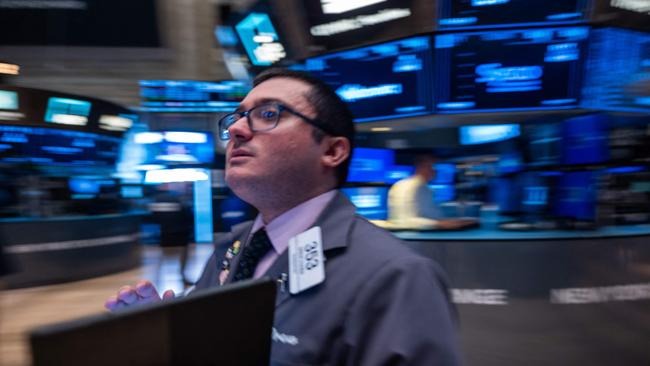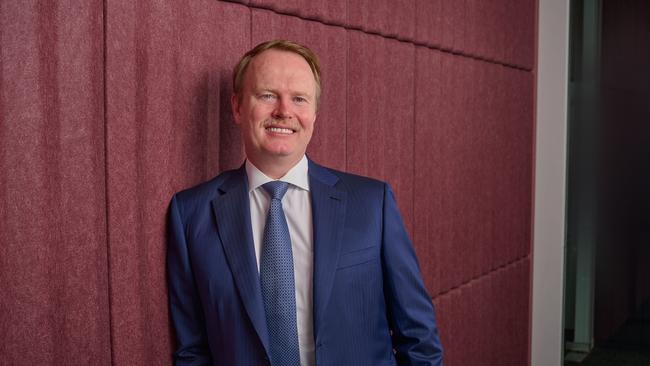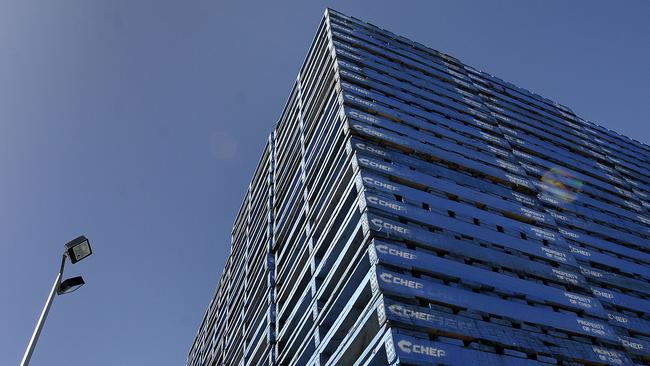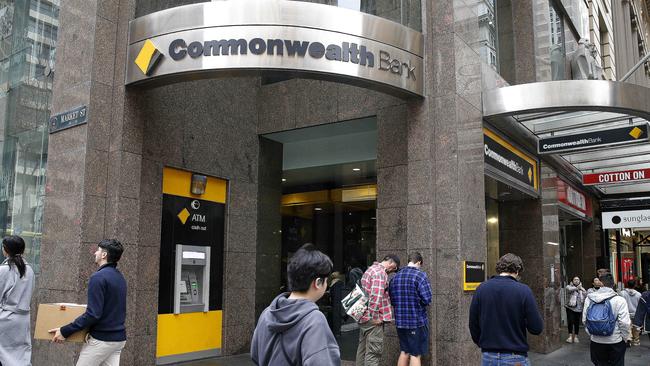Just like 2019: The warning signs that markets are ignoring
With everything pointing to a looming economic slowdown, why are cyclical stocks still so expensive?

Business
Don't miss out on the headlines from Business. Followed categories will be added to My News.
For influential stock picker Reece Birtles, the signs are pretty clear.
The slowdown is coming. In fact it’s starting to look like a re-run of 2019. This time, the difference is the stockmarket is simply ignoring it.
“I don’t think people realise 2019 was ugly before the Covid pandemic came and it all got forgotten because we never saw what was going to happen,” the Martin Currie Australia chief investment officer says.
“Earnings were getting downgraded. Company profits were looking tough. The Reserve Bank was cutting pre-Covid because the economy was slowing. You were getting some quite big distortions in markets which are not to dissimilar to now,” he says.

Birtles, who oversees more than $6bn in funds, was speaking with The Australian at Martin Currie’s office in Melbourne. He has been holding a round of briefings with big clients looking at where the market is at in the cycle coming out of the August corporate earnings season. On the surface everything in corporate Australia looks resilient, with far more companies matching or beating earnings forecasts than missing them. There are pockets of strength in the discretionary end with names like JB Hi-Fi coming in better than expected.
That’s all looking back, and the outlook is starting to get interesting. Companies that issued guidance in the whole had a negative skew. Dividends are increasingly being downgraded and several big names have large cost-cutting programs under way. For the members of the S&P/ASX 200 average change in earnings forecasts post-profit season was down 2.7 per cent, marking the biggest average downgrade in a decade. Profits too are being held up by margins expanding, not from revenue growth.
And the so-called valuation spread is where the distortion can be seen. This is a measure of expected share performance over the medium to long term. Looking through a cycle, if things get back to “normal” it’s an indication of expected returns from cheap stocks versus expensive stocks. As a rule of thumb for value stock pickers, they stand to make more upside on the cheap stocks returning to their normal valuation than the expensive stocks reverting to more normal levels.
There have been three points in recent market history when the valuation spread between cheap and expensive stocks was really wide: in the dotcom bubble of the early 2000s, leading into the Global Financial Crisis, and then in the early days of the pandemic.
“Currently we’re three quarters of the way to one of those events,” Birtles says.
On the expensive side of the spread there are names like banks, led by the record-beating CBA, and discretionary retailers like JB Hi-Fi. However it’s the stocks clustered on the cheap side that have got the attention of Birtles.
Here there are names like Telstra, Brambles, QBE, Orora, Brambles and infrastructure stable-style cashflow stocks.
“A number of defensives are actually in that cheap category; that’s what’s very unusual. Normally cheap are the risky (stocks) but at the moment safe is actually not expensive.”
The spread is being driven by momentum. CBA, which touched another record high on Tuesday, is a classic example, Birtles says. Investors – mostly index funds and retail investors – are piling in. Other big banks are starting to benefit from this effect.

However, CBA’s return on equity is the lowest it’s been in years, earnings growth is the lowest, and the charges for lending losses aren’t yet in the middle of the cycle. The bank might be solid and resilient but it’s a “low-growth business that has a downside risk on a recession”.
Birtles says this all points to valuation risk building through the market. The Reserve Bank will ultimately cut interest rates not because inflation is under control, but because unemployment is starting to rise. Other forward signs like manufacturing surveys in the US and business confidence in Australia are at best neutral and at worst sharply negative.
Birtles says the short-lived market meltdown in August that had been linked to the unwinding of the Japan carry trade was a “fire drill”. As global shares were sold off sharply the defensive stocks outperformed. Then as markets settled growth stocks powered ahead again. It happened again in recent months, although was less pronounced, when Wall Street was sold off on Friday on weaker than expected US jobs numbers. After a global sell-off on Monday, including in Australia, shares rebounded on Tuesday.
“The market is behaving as the idea that Goldilocks story is true. Occasionally it gets evidence to the contrary, and then it just decides to ignore that,” he says.
As a value manager Birtles is circling miners and the deeply out-of-favour lithium producers are starting to come onto his radar. Here it’s all about supply side. At some point the price of lithium will have to bottom as major players pull back on production.
“More than half the lithium producers are unprofitable, so you’re getting supplier responses. So even if you might still keep hearing bad news on EV demand or lithium battery demand, the actual commodity price of lithium is going to struggle to go much lower than here,” he says.
Hybrids going …
It might be a long runway, but APRA boss John Lonsdale has signalled he is no friend of retail investors as he prepares to kill off the nation’s near $40bn hybrid market. The banking regulator has called time on banks being able to count hybrid shares as part of their tier one regulatory capital stack; this will be phased out early next decade.
The move is ongoing fallout from last year’s banking crisis when Switzerland’s Credit Suisse faced collapse and was bailed out by UBS. Controversially the Swiss regulators opted to totally wipe out the value of Credit Suisse’s tier one hybrids at the expense of lower ranking equity holders.
As their name implies, hybrid shares are combination of debt and equity. They are listed on the ASX and pay a yield like a bond, but are designed to be converted to equity or written off to absorb losses during times of crisis.
In Australia hybrids are mostly held by retail investors – they too have long been staple holding for self-managed super funds. In offshore markets hybrids are largely held by big fund managers.

This is the issue APRA is worried about. The regulator fears steep losses in the event of a bank failure would disproportionally hit retail investors, increase risks and erode confidence in the banking system. However, if an Australian big four found itself in such a situation, there would be even bigger problems for the economy.
Hybrids pay a generous yield, which includes franked component that makes them more attractive.
The distribution of hybrids is usually based off the BBSW three-month floating rate plus a fixed margin. For investors this allows for some protection when interest rates rise, unlike a fixed rate government bonds.
APRA says international experience has shown hybrids don’t always act the way they are designed to, including absorbing losses to stabilise a bank in stress. In Australia there’s the added complexity of contagion and litigation risk.
Given banks are by far the biggest issuers of the hybrid instruments in Australia, the lack of liquidity will make it more expensive and less attractive for non-banks to issue the notes. Insurers and REITs and non-bank lenders are issuers, although this remains a fraction of bank volume.
Under APRA’s plans the bank hybrids would remain eligible as regulatory capital until their first call dates, with the notes being totally phased out by 2032.
eric.johnston@news.com.au
Originally published as Just like 2019: The warning signs that markets are ignoring




